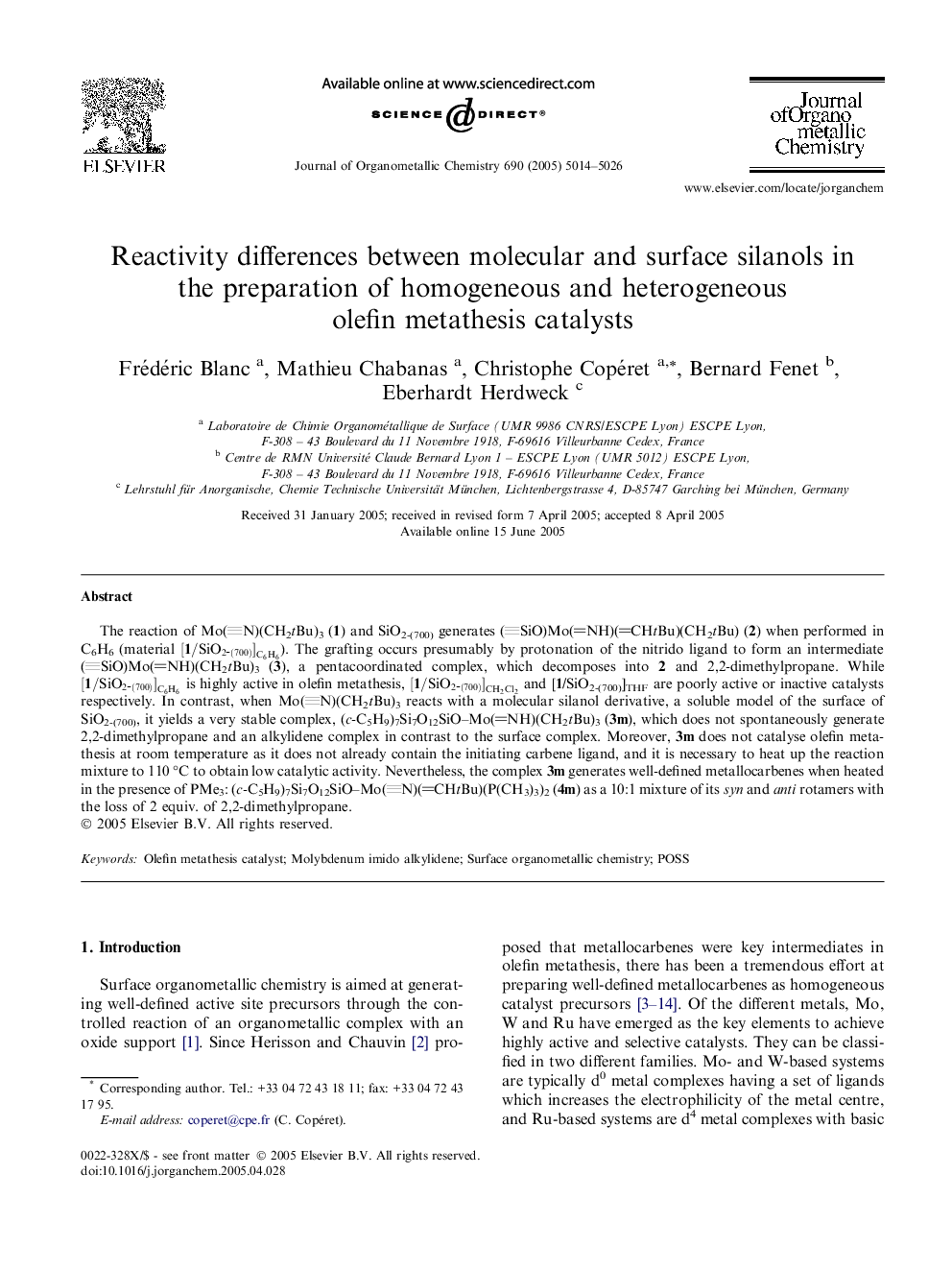| Article ID | Journal | Published Year | Pages | File Type |
|---|---|---|---|---|
| 1327223 | Journal of Organometallic Chemistry | 2005 | 13 Pages |
The reaction of Mo(N)(CH2tBu)3 (1) and SiO2-(700) generates (SiO)Mo(NH)(CHtBu)(CH2tBu) (2) when performed in C6H6 (material [1/SiO2-(700)]C6H6[1/SiO2-(700)]C6H6). The grafting occurs presumably by protonation of the nitrido ligand to form an intermediate (SiO)Mo(NH)(CH2tBu)3 (3), a pentacoordinated complex, which decomposes into 2 and 2,2-dimethylpropane. While [1/SiO2-(700)]C6H6[1/SiO2-(700)]C6H6 is highly active in olefin metathesis, [1/SiO2-(700)]CH2Cl2[1/SiO2-(700)]CH2Cl2 and [1/SiO2-(700)]THF are poorly active or inactive catalysts respectively. In contrast, when Mo(N)(CH2tBu)3 reacts with a molecular silanol derivative, a soluble model of the surface of SiO2-(700), it yields a very stable complex, (c-C5H9)7Si7O12SiO–Mo(NH)(CH2tBu)3 (3m), which does not spontaneously generate 2,2-dimethylpropane and an alkylidene complex in contrast to the surface complex. Moreover, 3m does not catalyse olefin metathesis at room temperature as it does not already contain the initiating carbene ligand, and it is necessary to heat up the reaction mixture to 110 °C to obtain low catalytic activity. Nevertheless, the complex 3m generates well-defined metallocarbenes when heated in the presence of PMe3: (c-C5H9)7Si7O12SiO–Mo(N)(CHtBu)(P(CH3)3)2 (4m) as a 10:1 mixture of its syn and anti rotamers with the loss of 2 equiv. of 2,2-dimethylpropane.
Graphical abstractThe reaction of Mo(N)(CH2tBu)3 and SiO2-(700) generates directly (SiO)Mo(=NH)(=CHtBu)(CH2tBu), a highly active catalyst in olefin metathesis, while its reaction with a molecular silanol derivative yields a very stable complex, (c-C5H9)7Si7O12SiO–Mo(=NH)(CH2tBu)3, which is inactive because it does not contain an alkylidene ligand.Figure optionsDownload full-size imageDownload as PowerPoint slide
